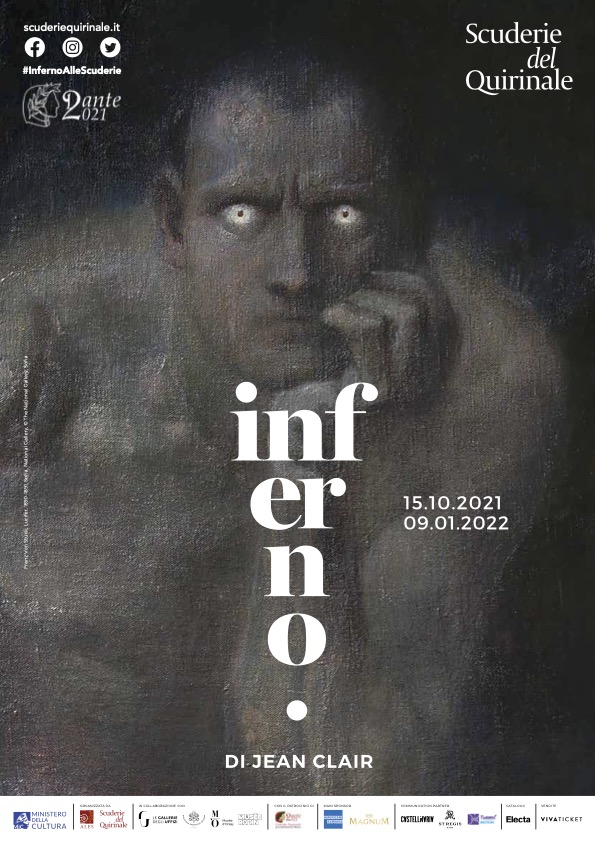Introduction
Franz Von Stuck Lucifer, 1890-1891 Sofia, National Gallery
Welcome to the Scuderie del Quirinale. Your descent to the exhibition “Inferno” - curated by Jean Clair and Laura Bossi - will be accompanied by a series of thematic audio insights, which closely follow the contributions of the exhibition catalogue, published by Electa. The privileged observation point is the Divine Comedy by Dante Alighieri, but the path you are about to undertake stretches from the history of art to literature to social history. With over 200 works, the exhibition calls to be experienced more as an adventure of the spirit than as a succession of masterpieces.
First of all, we invite you to focus on Dante as a poet of rebirth, a key word in this exhibition, which might help not to “abandon all hope ye who enter here”, and which you will find again at the end of the journey. Alessandro Manzoni, Gabriele d’Annunzio, but also Victor Hugo and Stendhal have in various ways described the Comedy as a re-foundation text. For de Chateaubriand "Dante gave birth to modern Italy", and there is no doubt that in the Romantic-Risorgimento era the role of "prophet of the new Italy" was projected onto the poet.
Early Italian cinema also advanced a reading of Dante as a bridge to modernity, with the feature film "L’Inferno", produced in 1911 by Milano Films. The project surprises for the great quality of the direction, the absence of easy shortcuts to effect, and a decisive appropriation of the innovative languages of symbolism and early futurism. Its release, after three years of work, should be seen as a true manifesto of Italian film production, which had a decisive impact on American cinema, and which at home paved the way for "Quo vadis?" by Guazzoni in 1913 and for "Cabiria" by Pastrone in 1914. In his "General history of cinema", in 1978, Georges Sadoul recognised that this film "stood out from all the world production of the time".
Today you can see a copy very close to the original from 1911, thanks to the extraordinary reconstruction work completed in 2011 by the Cineteca of Bologna. The extract of a few minutes that we propose here, on the entrance staircase to the exhibition, presents some of the most significant scenes of the film.



